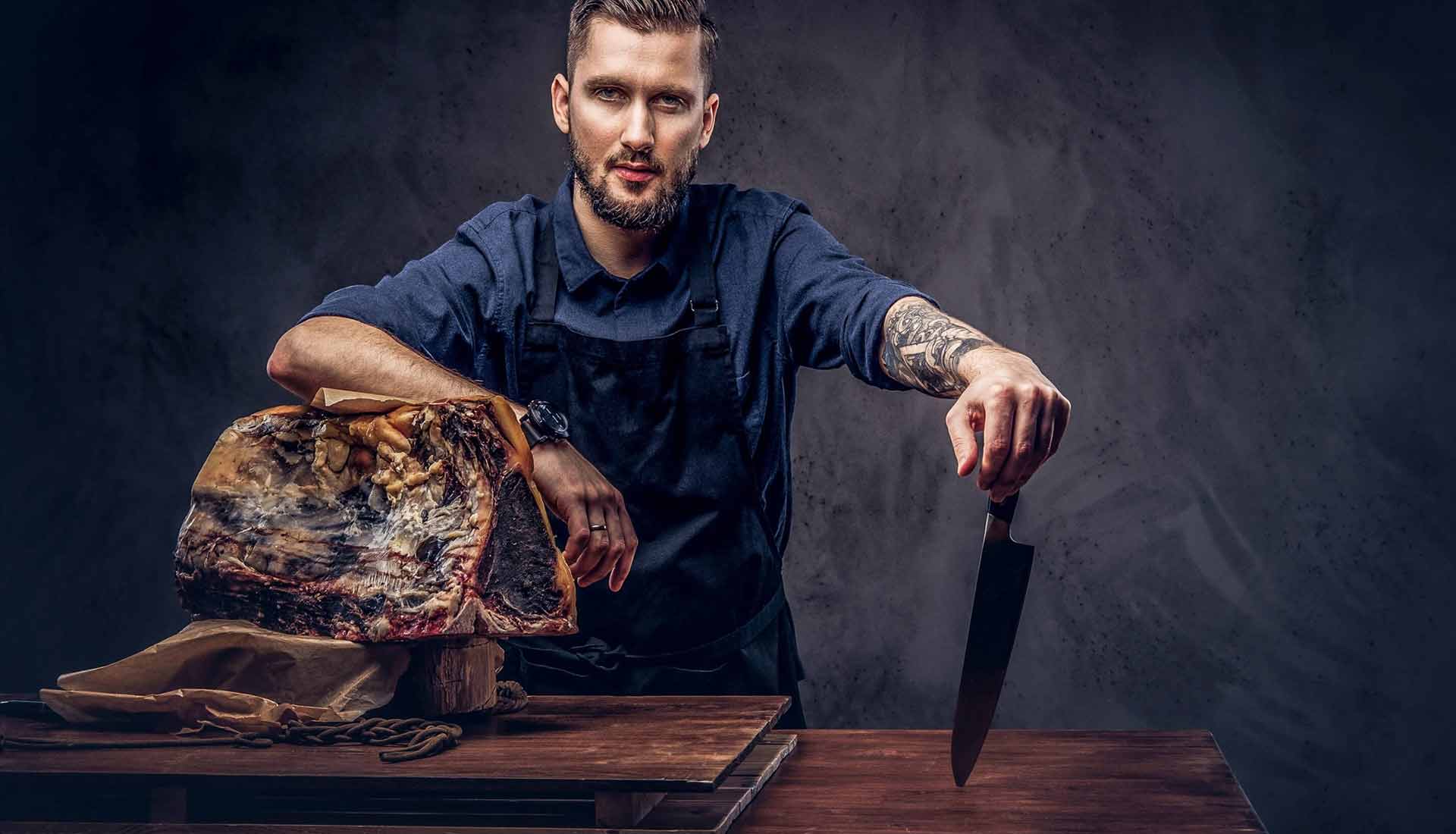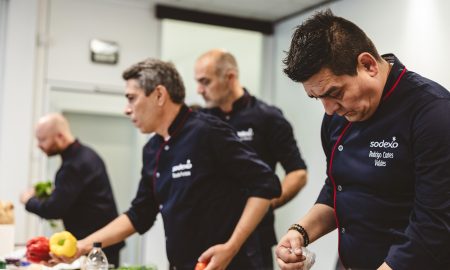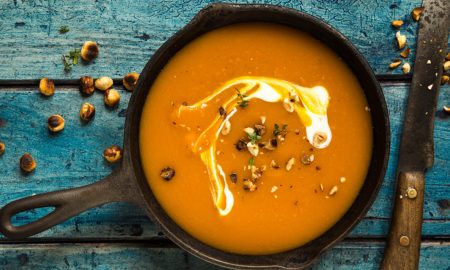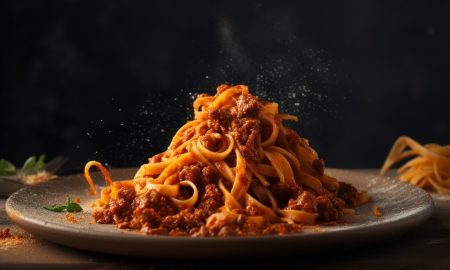As we all know, meat is just one of those things. What was a harmless treat a few years ago has become a problematic habit for many. Climate change, animal welfare, health – there is no doubt that the reasons for the increasing scepticism about meat among large sections of the population definitely has a lot to do with these issues. However, as much as veganism is arguably the most promising dietary trend of the future according to a large number of studies, restaurant guests don’t like things completely meat-free (yet?).
They have simply become more demanding and finicky when it comes to the piece of beef, veal or lamb they are served. In recent years, the restaurant industry has responded to this gradual, but now undeniable, shift. This is particularly true in the upscale segment. “In the past,” Daniel Veron explains, “you could serve guests a whole piece of meat, including the fat and bones. But you really can’t do that anymore. Today, a piece of meat must end up on the plate in such a way that the guest can easily savor it in its entirety.” Since he’s a native Argentinian, he should know. As a cut guru, he not only worked for many years at the legendary Gaucho steakhouse in London, he also acted as a consultant on highly successful concepts such as the Grossauer family’s El Gaucho locations in Vienna, Munich, Graz and Baden. For this, Veron used his decades of know-how – the gray eminence of beef cuts is, after all, over 60 – to develop and sustain his own cuts in addition to his sophisticated roasting techniques. This already brings us to the heart of the matter: Today, if you’re serious about your restaurant’s meat dishes, you’re not banking on offering bolognese, cheeseburgers and pulled pork all in one. Instead, you position your explicit meat concept based on a number of cuts that lend the restaurant a kind of artisanal profile, which celebrates meat to a certain extent.
Sieh dir diesen Beitrag auf Instagram an
The maker is the star
“With single-product concepts, the creator, not just the consumer, has a soft spot for the product, which therefore becomes personalized,” is how gastronomic trend scout Andrew Fordyce sums it up. “There’s a tangible passion and sometimes a story behind this that credibly conveys the quality of the product is measured against the standards of its creator.” Sure, this doesn’t necessarily apply only to meat. Nevertheless, what Fordyce calls the new “mono-fetish” is not only true for quinoa bowls and falafel, but even more so to the range of meat on offer, which consumers scrutinize with a watchful eye. “What piece is that on my plate? How was it cut? Where does the meat come from? How was it bred and fed?” These are all questions that are on the minds and lips of a growing number of diners who order an exquisite piece of meat in a restaurant. Many restaurateurs are already proactively addressing these questions by including them on their menus or even displaying them visually. The amazing thing about this period of change is that it actually demands new cuts. These new cuts cause a stir not only in terms of taste, they are also highly interesting from an economic point of view, in other words, as far as the use of goods is concerned.
A shoulder piece as a sensational find
First, consider the most spectacular example in recent years: the flat iron steak. Invented by none other than “Professor Meat” Dr. Chris Calkins in Nebraska, this cut experienced its triumphant rise in London thanks in no small part to the founding of a restaurant that bears its name. With eight restaurants, it can now easily be described as a chain. “Flat iron steak comes from the shoulder,” explains Dr. Culkins, who is a professor of Meat Science at Lincoln University in Nebraska. “For years, this piece was considered tough because it was used for every movement the animal made. However, we have found that some of the muscle can be used as high-quality steak. The challenge was to find the right cuts.
Sieh dir diesen Beitrag auf Instagram an
Before flat iron was picked up by the beef industry, it was largely sold for less than its value as roast or ground beef. However, thanks to this special cut, they then realized that a few pounds of steak meat simply need to be put through a meat grinder. Meanwhile, between 75 to 99 million pounds (35 and 45 million kilograms) of flat iron steaks are sold annually.” No wonder. The cost of the product is many times less than, say, tenderloin. It is relatively easy to prepare, and the result is very, very tasty. Charlie Carroll, founder and managing director of Flat Iron in London, describes it as the “democratization of great steak.” At Flat Iron, you can order the steak for just ten pounds. The meat is sourced from small English or Irish farmers who supply the best quality. It should also be mentioned that they really only serve flat iron steak at Flat Iron. That’s right, no rumpsteak, no ribeye, really only flat iron. “The meat has short fibers and only needs to be briefly seared,” Fordyce explains. “It’s ultra tender and super juicy. Served medium-rare, sliced thin and arranged on a hot stone, with a wooden board underneath, it arrives at the table as a instantly mouthwatering feast for the eyes.”
Sieh dir diesen Beitrag auf Instagram an
Communication is key
Daniel Veron also came up with his own cuts and despite his vast experience, is still a product of his time. For example, the busy meat god created the infamous corona cut for El Gaucho, which for understandable reasons was translated into English as king’s cut on the menu. “This cut is made by cutting the crown from the well-marbled center section of the beef rump,” Veron explains. “The outer layer of fat gives the meat a unique flavor and particularly appeals to people who like to have fat on their meat.” The cut called Tara de Ancho ribeye also originated from Veron’s knife. “This special cut involves thinly slicing a large piece of ribeye widthwise so that the pieces of meat that this steak unites around the fat pad can be enjoyed perfectly,” Veron said. However, to make sure no misunderstanding happens, it should be said that today, the cut alone is simply not enough. This is because you have properly communicate the craft, or even present it with a touch of drama. Whether displayed visually in the menu or on a wall, or – as is the case at El Gaucho – presented on a tray in its raw state for selection, the possibilities for conveying the essence of a concept to guests are as varied as they are indispensable. This is something Jefferson Rueda knows all too well.
Sieh dir diesen Beitrag auf Instagram an
The pork priest
While in many parts of the world the appetite for meat is on the wane, for the chef from São Paulo one thing is clear: meat is the future. Exactly how and why becomes clear with the help of his restaurant A Casa do Porco, which opened in 2015. There, everything revolves around the pig, or rather, around the pig in its entirety. That’s because his gourmet temple, ranked 39th in the prestigious World’s 50 Best Restaurants list, serves pork cuts that even the most diehard Brazilians have never heard of. Whether pork cheek as sushi or ears and tails as croquettes right down to the face and snout, which are processed into terrines and sausages, the culinary homage to the popular bristly animal is all about respect and a deeper understanding of animal-friendly breeding, nutrition and, above all, processing, as Rueda emphasizes “The future of meat is transparent tracing of the food production chain,” Rueda says. “My work is to process the entire animal to teach people about sustainable meat consumption. It’s very important to have this interchange of experiences, of cultures and recipes, and to talk about the problems and solutions that go with them, and therefore also about the future, which is meat,” Rueda says with a smile. Meat equals future – in light of the previously mentioned issues around climate change, animal welfare and health, that seems rather a bold statement to make. However, you could expand this to less but better meat celebrated through innovative craftsmanship is the future. It is therefore possible that in the foreseeable future meat consumption will once again become a palatable pleasure, and the aftertaste of the troublesome habit will soon be a thing of the past.
Sieh dir diesen Beitrag auf Instagram an
Denver cut
Thanks to its tenderness and flavor, this cut is ideal for both filet and roastbeef.
Chuck eye roll
The chuck eye roll is the continuation of entrecote towards the head of the animal. The versatile neck piece offers us cuts such as beef roasting, Denver cut, Sierra cut and ribeye.
Ribeye
The most prized piece on the entire neck – wonderfully marbled, extremely tender and really tasty. Two to three pieces of ribeye can be cut from the chuck eye roll.
Sierra cut
The flank steak in the neck. The best way to make the piece is to pan fry it and then briefly pop it into the oven.
Flat iron
Part of the top blade, this cut is a section of the bovine shoulder and lies below the shoulder blade. If the central tendon is removed, this is called a flat iron cut.
Beef roasting
As the name suggests, the roast piece is best cooked whole in the oven. Simply place it in a net and shove it in.
Tri-tip
Try-tip comes from the rump. It consists almost exclusively of muscle tissue, and is particularly tender.
Sirloin flap
This cut is located directly on the flank and can hardly be cooked tough due to its thick fibers.
Lamb chops
Lamb rack is a cut from the back. When sliced, it is also called lamb chop. It is best to marinate the chop for three to four hours before searing it for a few minutes. Afterwards, it can be put into the oven to make it even juicier.
Lamb salmon
Low in fat and tendons, this back muscle is either cooked whole or cut into small steak medallions. Next to the tenderloin, lamb salmon is the most tender and leanest piece of animal. It should be cooked until pink at the center. In gastronomy, it is often cooked sous-vide after a short, hot browning.
Tenderloin
Lamb tenderloin is so small that it is often not cut separately at all, but rather is left attached to the loin chop. As a single cut, it is suitable as a salad garnish with a very short finish, for oriental-inspired me-als or with fresh asparagus. As a meat strip, it particularly makes for visually appealing cut surfaces in pâtés or terrines.
Leg
This braised classic becomes even more tender and juicy when cooked very slowly at low temperatures under a tight-fitting lid after searing. Cook up to 24 hours at 149 degrees Fahrenheit (65 degrees Celsius).
Rack
Rack of lamb tastes great in its purist form as a roast with rosemary and thyme. This refines the distinctive flavor of the lamb, but does not mask its delicate aroma. Prepared whole and on the bone; root vegetables, onions and garlic can be added to make a rather easy to prepare gravy.
Wings
Whether as classic chicken wings or simply deep-fried, the wing is one of the most popular parts of the chicken.
Sot-L’y-Laisse
This insider tip among the chicken cuts is also called “chicken oysters.” This cut is a fillet-like piece located on the lower side of the bird’s back.
Breast filet
The chicken breast fillet is one of the tastiest parts and is also very tender and low in fat.
Although pork belly was on the decline for many years in the restaurant industry because of its significantly high fat content, it has recently been making a comeback. Pork belly is well-marbled with fat and may still be partially interspersed with ribs. It is taken from the posterior, which is the bottom part of the chest. It can be braised or roasted, but also cooks up nicely on the grill.
Rack
The rack is also called pork ribs. This is located on the back of the pig. Depending on the location, neck or tenderloin portions of the meat may be present. Fine fat inclusions ensure an excellent natural flavor and that the meat remains juicy during roasting.
Half loins
A cut from the hind half of the pig. It is located between the pork chop and the leg. A light layer of fat provides additional flavor. Very tender and juicy.
Tenderloin
The tenderloin is a cut from the back half of the pig. It is located on the underside of the back chop, which is called the loin chop. The tenderloin is still the most sought-after cut of pork. It is equally well suited whole as a roast or sliced into medallions for short roasting. In addition, it is used to make meat cutlets or fondue.
















Pingback: Ojo de Agua - Argentine beef of the highest quality | KTCHNrebel